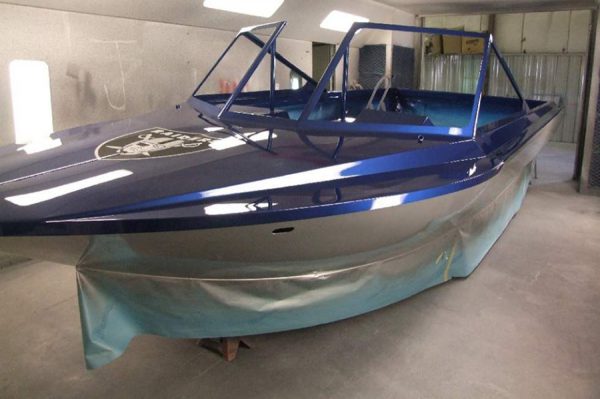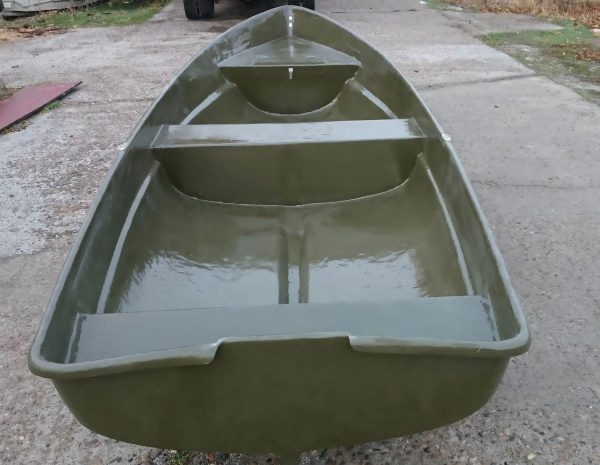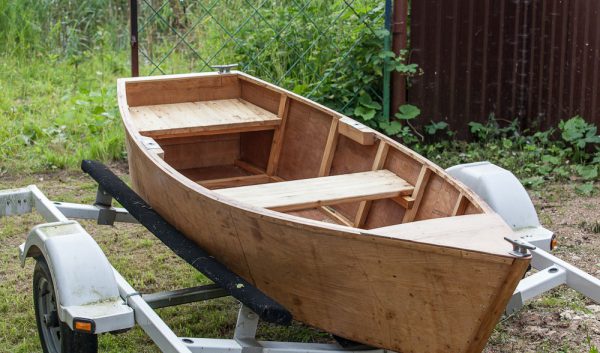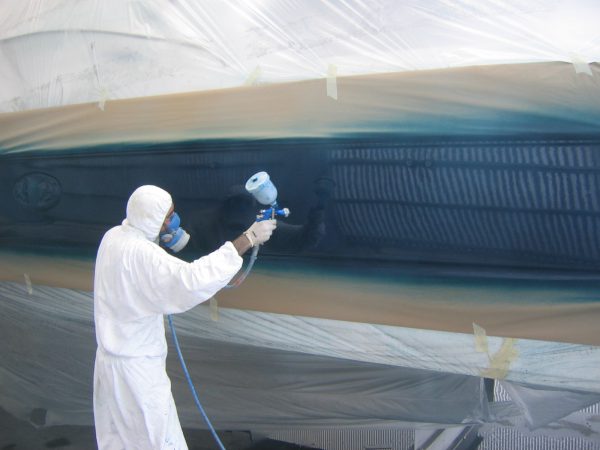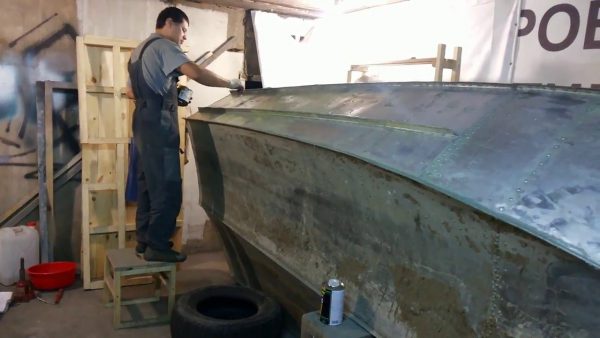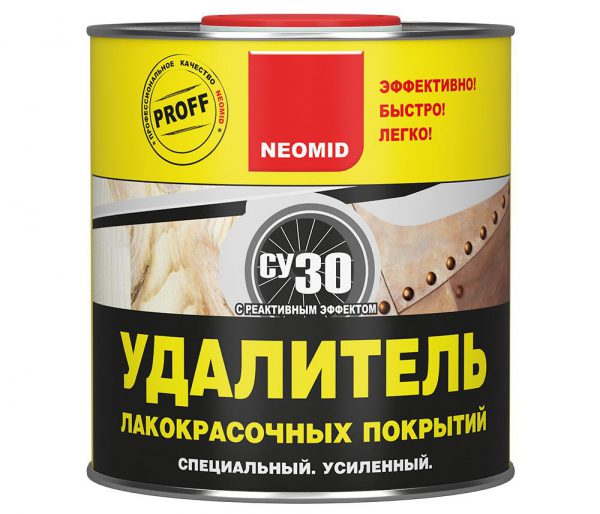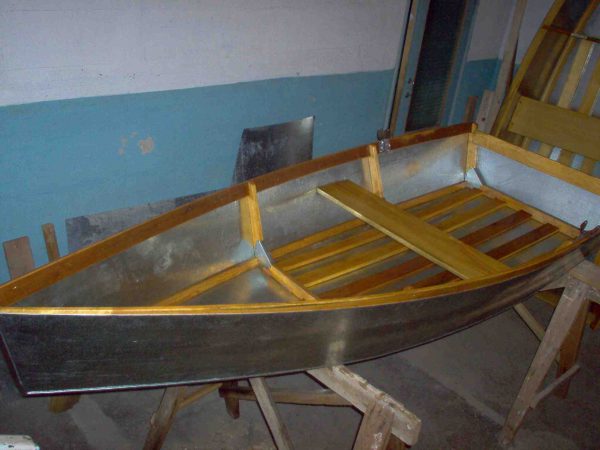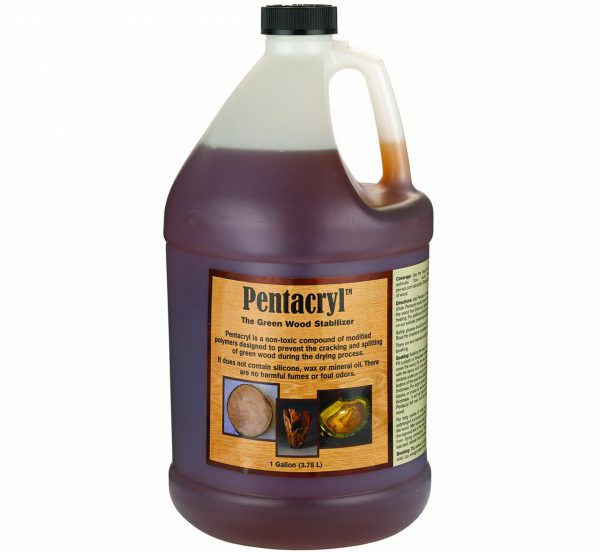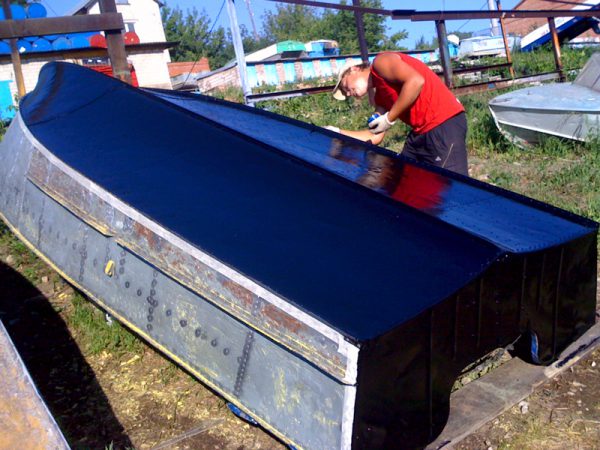Painting a vessel is not an easy task; the process differs from painting ordinary products and furniture. For this purpose, you will have to purchase a special paint and varnish material that will reliably protect the boat hull. Paint for boats is selected and depending on the basis - plastic, metal or wooden. If all the recommendations are followed, you can paint the water transport yourself.
- Features of painting boats
- Aluminum boats
- PVC boats
- Wooden boats
- Plywood boats
- Boat coloring
- Plastic boat care
- Preparation and painting of the boat
- Flushing paint
- Rust removal
- Puttying
- Padding
- Dyeing
- Boat bottom painting
- Painting wooden parts inside the boat
- What paints to use
- Ways to apply paint
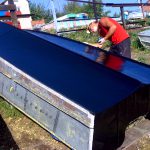
Features of painting boats
The boats are made from a variety of materials - PVC, wood, their base can be rubber, fiberglass, but the most popular and high-quality aluminum swimming craft are considered. Modern boats are made from duralumin (duralumin) - a high-strength aluminum alloy with the addition of magnesium, copper and manganese. The mass of the duralumin yacht or boat is small, while the products are very reliable, resistant to damage, easy to transport and launch.
The technique of painting boats has its own specifics. The paint should increase the service life of the coating, while having high moisture resistance, suitable for swimming in different types of water bodies. It is equally important that the paintwork material gives the product an attractive appearance, enhances its aesthetic qualities. If the topcoat usually has a transparent texture, then the colors are tinted in a variety of colors. On some types of foundations, the paint lays down with difficulty, rolls, so you have to increase the level of adhesion in different ways.
to contents ↑Aluminum boats
Painting of aluminum water transport can be performed by two methods:
- Powder. For this purpose, paints in powders are used, which are applied to the body after its cleaning and chemical preparation.
- Anodizing. It implies the creation of an oxide film on the surface of aluminum in a galvanic manner (anodic polarization in a conductive medium). At home, such staining is possible, but special equipment will be required.
The first method is difficult to implement. After cleaning, preparation, paint is applied, the boat or its parts are placed in a thermal chamber. There, under the influence of high temperature, the powder melts, forming a strong protective layer. The life of objects after painting will be as long as possible.
If small defects appear on the bottom or sides, you can get rid of them with a special pencil. The difference between the two methods listed is in the resulting color. If during the anodizing the boat will have a beautiful gray tint, then with powder coating you can get any desired tone.
to contents ↑PVC boats
Such products are very popular with fishermen, because they are cheaper than aluminum. They replaced the inflatable products. They need to be painted with coatings that are resistant to mechanical and chemical effects. Also, the paints must be quick-drying, give high strength to the coating, have water repellent properties.It is necessary to purchase coatings for rigid polyvinyl chloride, profiles, other PVC products.
In industry, a new coating material, PaliPlast RP 2040, is used for such facilities. They can be painted after thorough preparation and degreasing using a cleaner for polyvinyl chloride.
to contents ↑Wooden boats
With the advent of modern materials, wooden boats lose their position, but are still used. Some people design wooden boats themselves, because it is inexpensive and reliable. But such objects rot from constant residence in the water, crack, fail. It is worth painting the tree regularly, at least every 1-2 years.
First you need to tarry the boat, which is long and difficult. Next, the body and bottom are sanded with sandpaper to give smoothness. Equal bases are painted with a roller; in hard-to-reach places they are tinted with a brush. At least two coats of paint should be applied to make the coating more durable. The first layer will be thin, the subsequent ones will be thicker, so there will be no drips on the boat. Usually, paints based on lead white with the addition of colorings are used. Finally, varnishing is performed. Metal parts are painted with lead minium, glyphthalic enamels.
to contents ↑Plywood boats
Plywood has poor resistance to water, so without material protection the material will quickly delaminate. First, drying oil is applied to the plywood, after which it is necessarily primed. There is only one paint that can protect the base of the boat - epoxy. LKM will make plywood firmer, stronger, the service life will increase. Painting is best done with your own hands - attracting professionals can cost more than the price of the boat itself.
to contents ↑Boat coloring
As the boat is operated, a thick coating of bacteria, small aquatic organisms appears at its bottom, which causes a decrease in speed, disruption of the operation of devices and a number of other problems. To avoid trouble, it is recommended to apply special paints on an alkyd or epoxy base below the waterline. They are also called “non-fouling” or “non-fouling”, since they do not allow formation on the fly.
Before applying the composition, the body is cleaned with a special wash, the surface is examined to identify defects and damage. If they are, they repair the boat first. Then the base is primed, covered with neobrastayka. It is better to use epoxy coatings with the addition of copper oxide - their price is higher, but you need to use the products once every several years. Application is carried out by roller, brush or spray gun, in industry use the method of airless spraying.
to contents ↑Plastic boat care
Boats made of fiberglass, a different type of plastic, during their service, lose their visual appeal and lose their luster. But they do not rot and they do not need to renew the color on their bottom and body every year. The disadvantages include the inability to paint the product at home - you have to turn to specialists, which is expensive. Therefore, they paint such objects only when they are significantly worn out, when there is no other way out.
to contents ↑Preparation and painting of the boat
To prepare the surface for painting, you must do the following:
- To clear the boat of pollution. It is necessary to remove dirt, sand, algae from the object, this should be done by pulling the boat ashore. As tools, you can use paper clips, rags, brushes, water from a hose under pressure helps well.
- Remove equipment that interferes with painting. If the skin is removed, it is also advisable to remove it. This will help to paint more thoroughly, without leaving cracks, unpainted areas. The remaining parts must be covered with a film, construction tape before work.
- Remove the wax coating. If any, wipe it off with a solvent. It removes grease and wax well with a sponge dampened in Awl-Prep. After you should slowly run your hand over the surface of the product - it should not remain smooth as a candle, areas.
- Repair all broken, damaged items. Dents, cracks, pits, corrosion areas must be removed.Otherwise, the product will have a short life. Most defects are perfectly fixed by epoxy resin coating.
Often old paint remains on the boat. You can leave a layer if it has no visible damage, smudges and it is not too thick. To improve adhesion with a new paint, you can simply wipe the coating with an abrasive - for example, a metal sponge.
When the paint cracks, peels off, the preparation should be more thorough. You can remove the paintwork in two ways - by grinding or washing. The first option is more convenient, faster. Use a sandblasting gun or grinder, a drill with a brush as a nozzle. Manually small surfaces can be processed with sandpaper. When cleaning an aluminum boat, it is important not to scratch the anode layer, which has a yellow-gray tint. Damaged places on the anode layer must be well sanded.
to contents ↑Flushing paint
Flushing is more preferable than grinding, but this method is laborious. The whole process should take place in the fresh air, in warm weather, in dry weather, or in a well-ventilated area. It is better to wash in parts, processing areas of no more than 1-2 square meters. m. To accelerate the reaction, cover the object with a film.
For flushing use corrosion-inert means:
- Elcon S. Well removes bituminous, alkyd, epoxy and other paints. The liquid is applied to the base, kept until the old paint swells, crackes. Then paint is removed with a spatula, scraper.
- NEOMID. This tool is considered enhanced, it is used on thick coatings of coatings and varnishes, as well as on especially strong compositions - epoxy, phenol-formaldehyde, polymer. 10-25 minutes of aging are enough to completely wash off the paint.
to contents ↑After using the wash, it is important to take measures to prevent damage to the new coating, which will be applied subsequently. To do this, wipe the boat with solvents - acetone, white spirit. After that, they dry the object well and proceed to the next stage.
Rust removal
Against rust, which is often formed on the basis of ferrous metals, special converters should be used. They prevent the process from progressing and also serve as corrosion prevention. The transducers are applied before the paintwork, as a result, after 30 minutes a white coating appears on the surface. After removing it, you can continue the work of painting the boat.
Puttying
The use of putty in boat repair is not recommended, especially when it comes to aluminum products. Hard putty materials are hard, therefore, in case of inevitable vibration of the body during operation, the applied layer will crack. Putties also have high hygroscopicity and absorb moisture, which is why they do not last long. Only epoxy products do not have such disadvantages. They are recommended to be used when there is an urgent need to close chips, defects, and leveling the surface. If the defect is large, putty is applied to the fiberglass layer.
to contents ↑Padding
The primer, in contrast to puttying, is an obligatory stage of painting a boat. Moreover, it is necessary to apply the soil as soon as possible after removing the old paintwork and degreasing. If you leave the “bare” aluminum in the air, it will quickly darken and the paint will lie unevenly on it. The primer will provide good adhesion of the base to any type of paint, reduce water permeability. Use specialized soils - for example, VL-023,02 or epoxy. After applying such funds and painting, the product can be operated without problems in the most aggressive conditions in any weather.
The priming procedure is as follows:
- mix base and acid diluent;
- stand the remedy for 30 minutes;
- apply a layer to the boat, allow to dry;
- apply another coat.
Dyeing
Paint the boat should be a dry, warm day, this will get an excellent result. It is desirable that the humidity is not more than 60%. Before buying paint, make sure that it is well compatible with the primer. Immediately before staining, you need to slightly grind the primed base with fine-grained sandpaper.
Apply the paint with a roller, brush, spray gun - if desired. You need to start from the bottom. In any case, small areas are tinted with a brush. After the first layer has completely dried, it is recommended to lightly peel it with the same emery cloth (grain - 300). After that, perform another 1-2 coats of paint.
If you decide to paint the boat in camouflage, it is important to get natural material - the leaves of cattail, fern, various trees. The primed base must be overlaid with leaves, painted with three shades of paint, then varnished.
to contents ↑Boat bottom painting
This part of water transport has the highest load, because it is exposed to water, salt, wears out faster. The shipbuilding enamel XC-436 is well suited for coloring the bottom, increasing the corrosion resistance of products. It is applied at least to the waterline and to the entire underwater part of the boat. The tool goes well with neobrastayki, primers. LKM is applied in 2-3 layers in any way. If the boat will be stored in water, on top of the XC-436 is once again covered with nerastayka.
to contents ↑Painting wooden parts inside the boat
For this purpose, it is recommended to use special yacht varnishes on an alkyd-polyurethane basis. They provide a durable, weather-, waterproof coating that does not respond to the action of petroleum products, household chemicals. Varnishes emphasize the structure of the tree, well protect it from ultraviolet radiation.
to contents ↑What paints to use
The shops have a wide selection of coatings - from simple enamels to two-component paints. Experts recommend painting boats with epoxy or polyurethane paint; they last much longer than others. But the technology of working with such materials is complex and beyond the reach of beginners. Epoxy should not be applied if the product was previously painted with oil-based coatings. The disadvantage of epoxy material is low resistance to ultraviolet radiation, rapid tarnishing in the sun.
Polyurethane paints give the best protective and decorative properties. They almost do not react to sunlight, but at the same time they tolerate frequent diving under water worse than epoxy. Therefore, there are epoxy-polyurethane compounds on sale that combine all the properties of these paints.
Other types of paints:
- Oil. These products are made on the basis of drying oil and contain various types of pigments. If the paint includes lead pigment, aluminum boats should not be painted with it.
- Alkyd. Diluted with white spirit, they give a very juicy, bright color. Such paints serve less than epoxy.
- Acrylic They are considered durable and economical, do not turn yellow for a long time.
- Perchlorovinyl. Very resistant to the action of kerosene, gasoline, synthetic oils, well suited for sides, bottoms, cockpits.
Popular brands of paint for boats are Progress, Raptor (automotive), Pentacryl, etc.
to contents ↑Ways to apply paint
To choose the method of painting surfaces is individually, based on the availability of tools and equipment. The best way is to apply with a spray gun. Work is fast, without hitches, a large area of the boat can be sprayed with a spray gun, any type of paint is suitable for it. There is also a minus - all unpainted surfaces will have to be very carefully protected.
The roller can also be used to paint crafts with your own hands.It is inexpensive, you can buy it at any store. But the roller is not suitable for polyurethane paint, it will have to be applied only with a spray gun. To work with a brush, accuracy and patience will be required, since this method is the most time-consuming. To get even coverage, it is better to have painting skills. Beginners usually choose rollers that give a smooth finish and allow you to evenly paint over all parts of the boat. All repair work can be done independently, without extra costs!

